Enabling independence through technology
We partnered with a telehealth provider to design, build, and test an MVP for a mobile concierge healthcare service. The service is aimed at older adults in an independent living community.
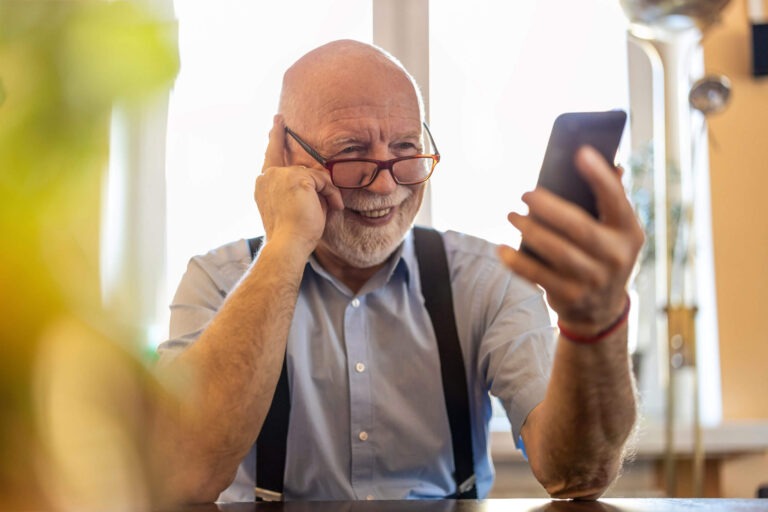
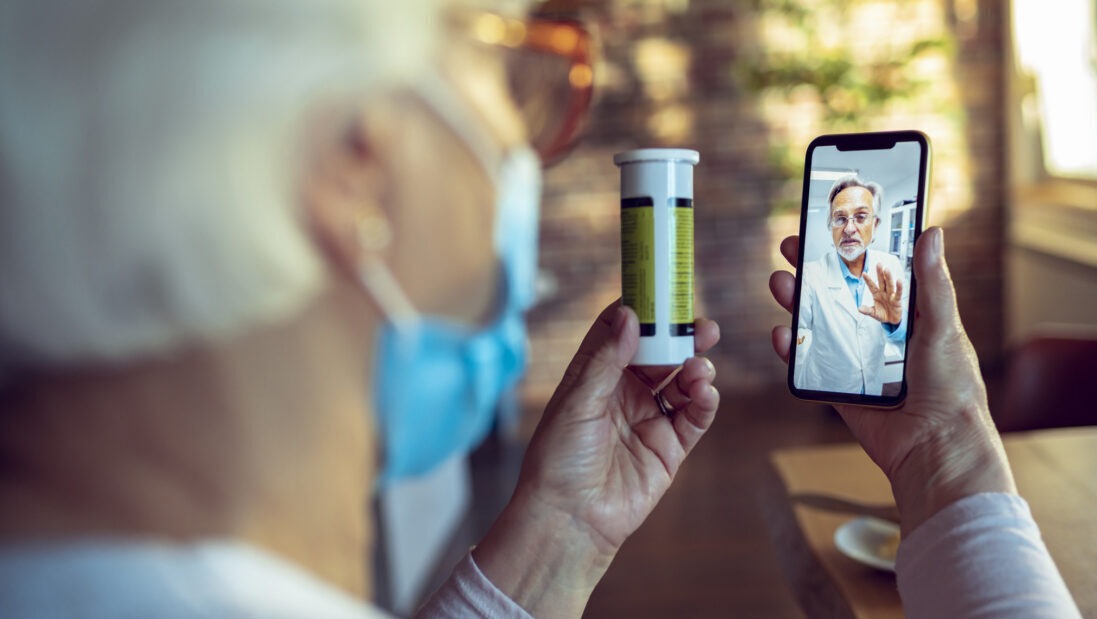
We partnered with a telehealth provider to design, build, and test an MVP for a mobile concierge healthcare service. The service is aimed at older adults in an independent living community.

An independent living community wanted a mobile healthcare solution that could provide its older residents with 24/7 remote direct access to a healthcare concierge. The concierge would provide immediate support and help to coordinate care services for that resident, including necessary interventions, personal support plans, appointment scheduling, telemedicine visits, and pharmacy needs. Unlike impersonal pre-programmed systems that currently exist in the marketplace, this concierge service would be customized to enable a resident to connect directly with a concierge who would know the details of their health history and could provide immediate support and guidance.
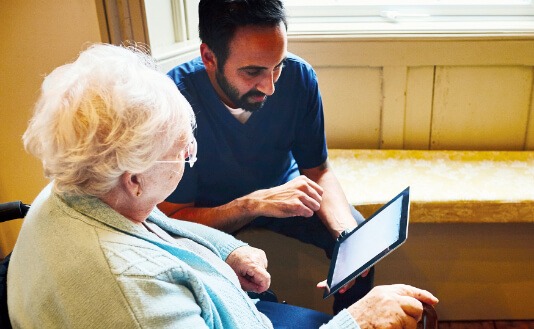
Working closely with our client, we designed and developed a simple-to-use healthcare application aimed at older adults that directly connects them with concierge services. Using an interactive tablet with a simplified interface, seniors can gain immediate access to a telehealth concierge, receive notifications about upcoming medical appointments, or call 911 with the tap of a single large button. This MVP lays the foundation for a full-product launch – a remote concierge service that allows an aging population to age safely in their homes.

Our approach began with a discovery workshop, where we brought together client stakeholders and product experts from our design and product management teams. The goal of a discovery workshop is to align on a single product vision, gain customer insights, and build a shared understanding of our objectives. Through this initial workshop, we examined:
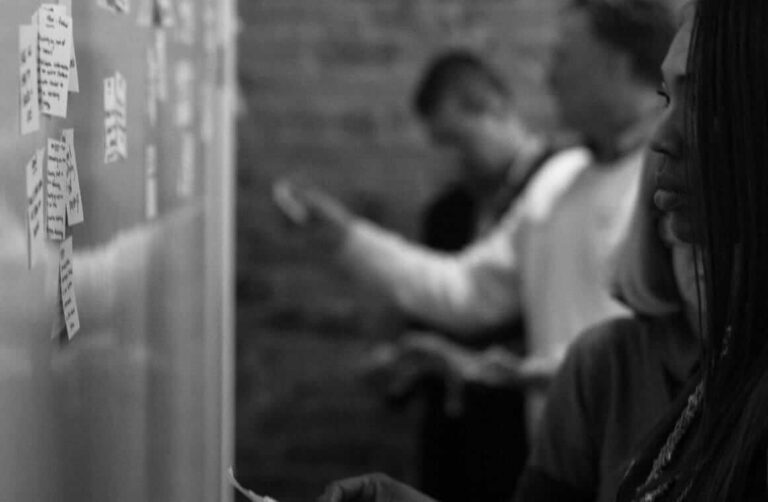
Once we aligned on a product vision, our research team took a deep dive into our client’s competitive landscape, searching for any existing products that might currently be on the market and compete with our client’s product vision. Our research uncovered a handful of pre-programmed systems, but none that provided seniors with instant connectivity to a full-service healthcare concierge. The image to the right shows one of our activities, Blue Ocean Analysis, that helped our client clearly view opportunities in their competitive landscape.
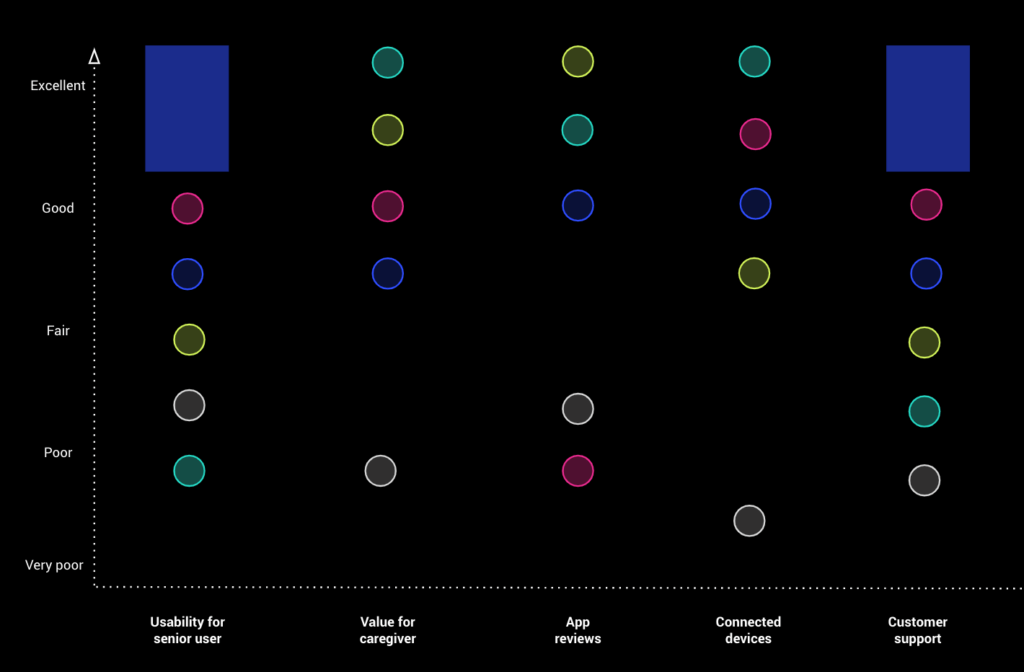
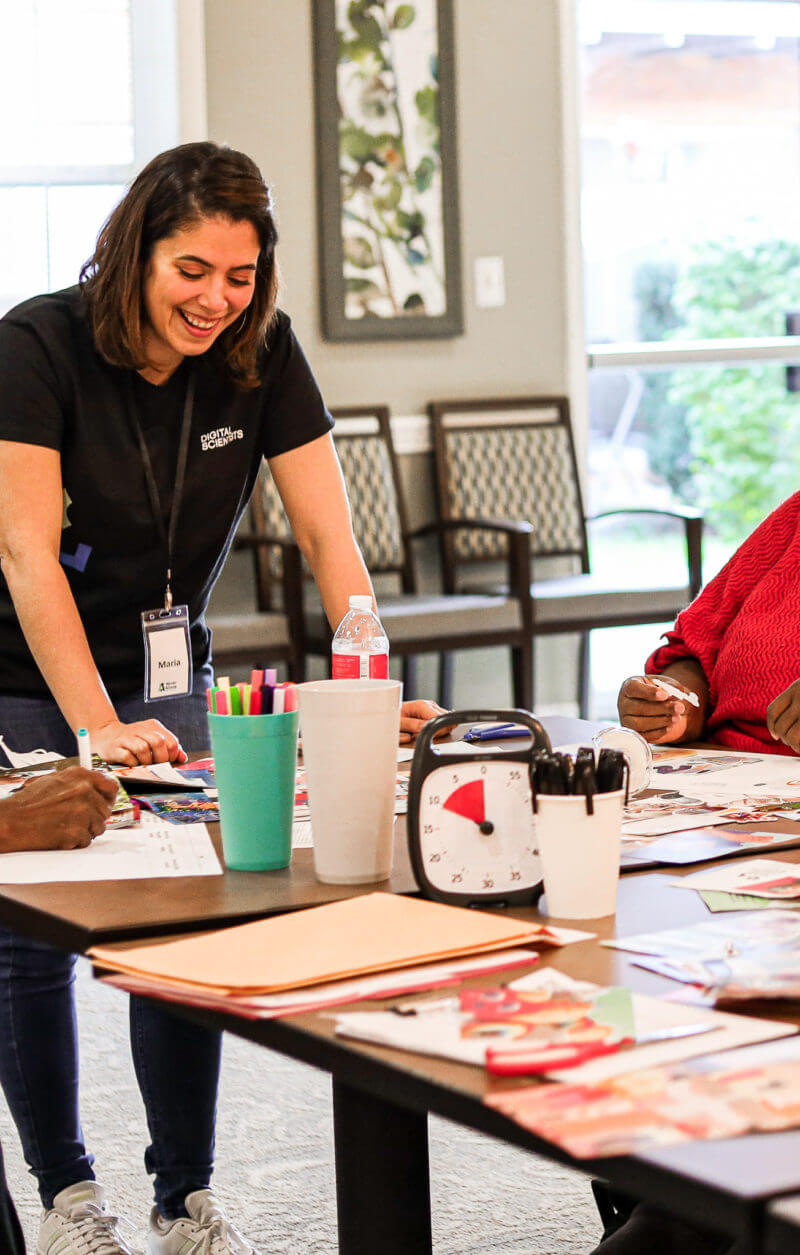
For many of our team members, user research is a favorite activity. We’re a curious bunch that loves human interaction and learning first-hand from a user. But when it comes to interviewing older adults, specialization is necessary. Though many older adults embrace the latest technology, some have little to no experience using mobile devices. From terminology to swipes, every interview question and gesture needs to be considered carefully for a generation of residents that didn’t grow up with digital technology.
For this reason, when we interview older adults, we deploy a specialized team of researchers skilled at interviewing this age group. It takes a creative approach and just the right team to establish trust with vulnerable populations. Using plenty of visual aids and interactive activities, we’re able to emotionally connect with our interviewees and draw out their user preferences and experiences.
Just as interviewing older adults requires specialized training, designing for older adults also poses a very interesting set of challenges. From font sizes to color schemes, designing for senior populations requires a shift in perspective. Among the considerations in designing for older adults are:
Among the considerations in designing for older adults are:
